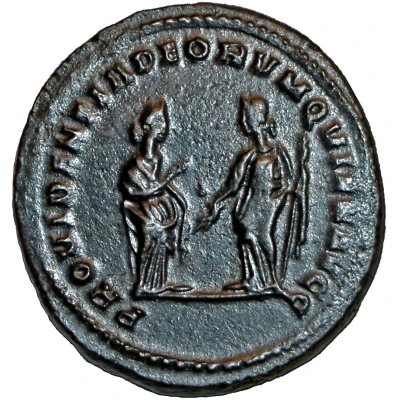


© John Conduitt (CC BY-SA)
Nummus - Diocletian post-abdication; Londinium
| Bronze | 10.5 g | 27 mm |
| Issuer | Rome › Roman Empire (27 BC - 395 AD) |
|---|---|
| Emperor | Constantius I Chlorus (Flavius Valerius Constantius) (305-306) |
| Type | Standard circulation coin |
| Years | 305-307 |
| Value | Nummus / Follis (¼) |
| Currency | Argenteus, Reform of Diocletian (AD 293/301 – 310/324) |
| Composition | Bronze |
| Weight | 10.5 g |
| Diameter | 27 mm |
| Shape | Round (irregular) |
| Technique | Hammered |
| Orientation | Variable alignment ↺ |
| Demonetized | Yes |
| Updated | 2024-10-05 |
| Numista | N#214385 |
|---|---|
| Rarity index | 97% |
Reverse
Providentia (personification of the ability to foresee and make provision) standing facing, head right, receiving olive branch (signifying peace) from Quies (the personification of tranquillity) standing facing, head left, holding branch and sceptre. No fieldmarks or mintmark (London).
Script: Latin
Lettering: PROVIDENTIA DEORVM QVIES AVGG
Translation: The restful peace of the (two) emperors (represented by two Gs) by the providence of the gods.
Interesting fact
One interesting fact about the Nummus - Diocletian (post-abdication; Londinium) coin is that it was issued during a time of significant economic and political change in the Roman Empire. The coin was minted in the years 305-307, shortly after Diocletian's abdication as Roman Emperor, and during a period of civil war and political instability. Despite these challenges, the coin still maintains a high level of craftsmanship and detail, with intricate designs and inscriptions that reflect the cultural and artistic achievements of the Roman Empire at the time.